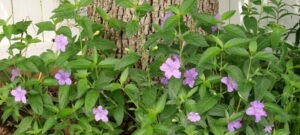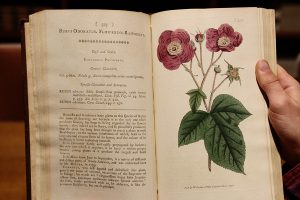This article was written by Edward Bickett, 2019 BRIT Summer Intern and student at University of Texas at Arlington. Edward interned with Dr. Brooke Best and Resident Research Associate Dan Caudle, working with the All Saints Episcopal School Biodiversity Assessment Project within the Prairie Research Program (PReP).
“What hidden treasures lie within this sea of grass?”
Part One: The Lonesome Road
The Lonesome Road, a misnomer in name as my companions kept me company, yet its length was undeniable. The Lonesome Road spanned the fields of Natural Prairie and The Cultivated Field alike, all the way into the tree line towards the eastern edge of the prairie. Through fields of lemon bee-balm and King Ranch bluestem. Past mesquite and hackberry the journey of the summer began with this transect. This was in many respects the learning run for me, as this was the first time I had taken formal collections for any herbarium. I learned the proper way to press specimens in the field press and the correct way to use the equipment to take a complete specimen with little damage. A routine was also established, 4 hours a day, every weekday. A transect line was measured with a 100 m measuring tape, and my partner and I placed a meter-by-meter square down and determined all the species within it, along with the percentages of coverage within the square. In no time at all the Lonesome Road was walked and the next transect awaited my attention.
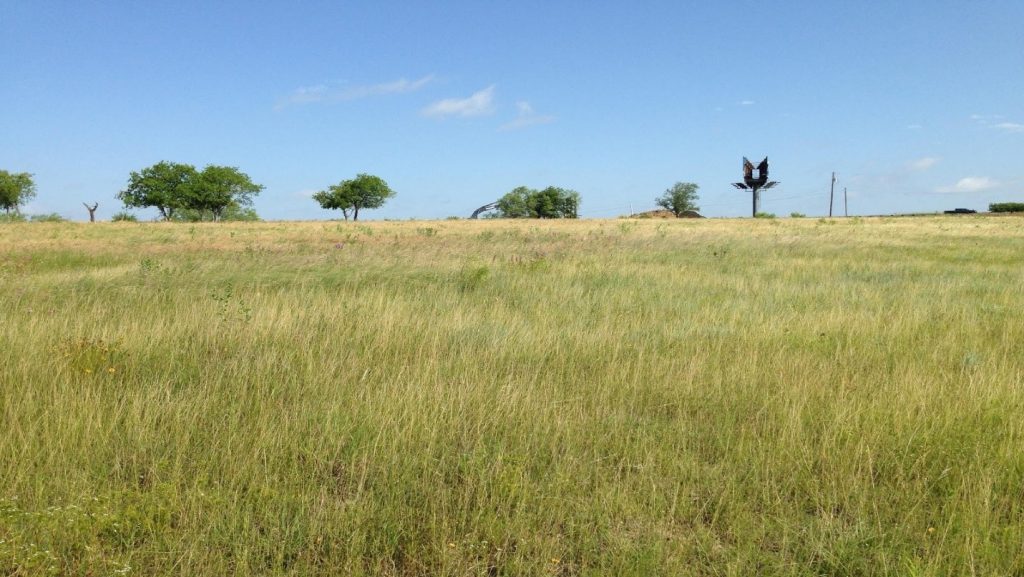
Part Two: Twin Song
Twin Song, aptly named for the cries of two sparrows darting high in the sky, began after the Lonesome Road. Lemon bee-balm was plentiful as the sun burned bright down upon us. It stretched far in the distance yet was shorter than the Lonesome Road, but the diversity of the transect was just as tremendous. There were many instances of differing grasses as well, from King Ranch bluestem to meadow dropseed to Japanese brome. In this transect as well was the first occurrence of my favorite herbaceous plant species within this area, Salvia texana, Texas sage. The soft purple flower grew from it with quiet resilience in a clearing within the cultivated field. Onward we trekked, following the transect line into a tree line of hackberries, where the diversity grew thin and the woody litter grew dense. The days grew hot and long as June advanced along at a pace matched only by my and my partner’s intensity.

Part Three: The Beaten Pathway
With the Twin Song sung and the heat bearing down, the Beaten Pathway survey begun. Due to the fact that this transect was crossed multiple times by the path the rancher’s truck had driven over, the survey samples that were taken contained vastly different grasses. Whereas the other transects had longer grasses like Sporobulus compositus, this transect’s dominant grass was buffalo grass since it did not have to compete with the longer grasses. The grass was shorter and more disturbed being it was a mere 10 meters from the road. Near the end of the transect a welcome sight appeared, the sight of a hawk, the king of the skies flying low and watching us. No doubt searching for its next meal, we looked with awe as it drifted on the column of air high into the sky. The transect ended when it came upon a dried creek bed, across which lay the next step in the journey, the Pollinator’s Alley.
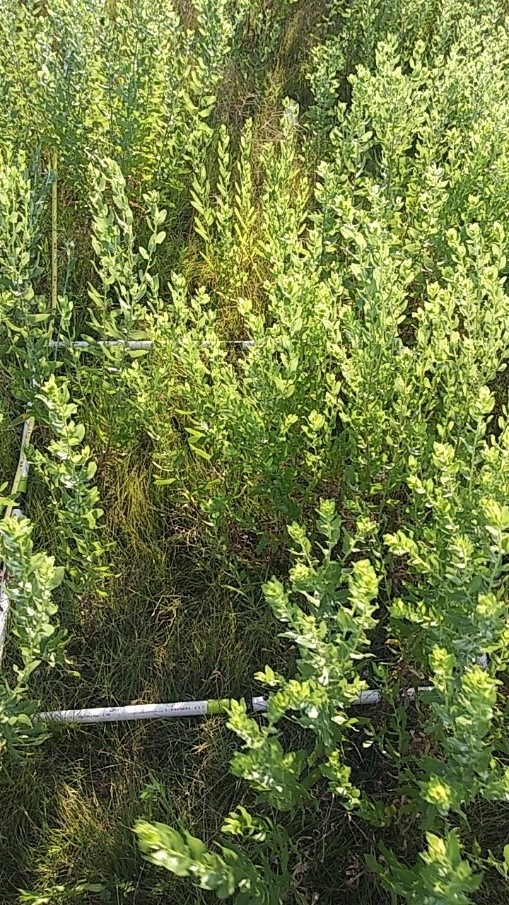
Part Four: Pollinator’s Alley
The fourth transect, Pollinator’s Alley, was the most unique of the transects and my personal favorite of them all. It had the most levels of species diversity, and because it was on the eastern side of the creek bed, and the tree line, it was completely undisturbed, allowing for native plants to foster and grow in abundance. Curly-cup gumweed, Indian blanket, and lemon bee-balm were highly prevalent along with buffalo grass and meadow dropseed. This transect ran south to north and ended by the I-30 access road. Little bluestem grew in abundance in the later areas, indicating a soil stratum change. By this little bluestem was the discovery of poison ivy and a colony of venomous black widows, giving me pause to reflect on the fickle nature of the such beauty. For within the most beautiful of roses lies the sharpest of thorns. Bittersweet was our taste of completion, for the ending of the journey was almost at hand. The final transect lay ahead…under the ominous shade…!
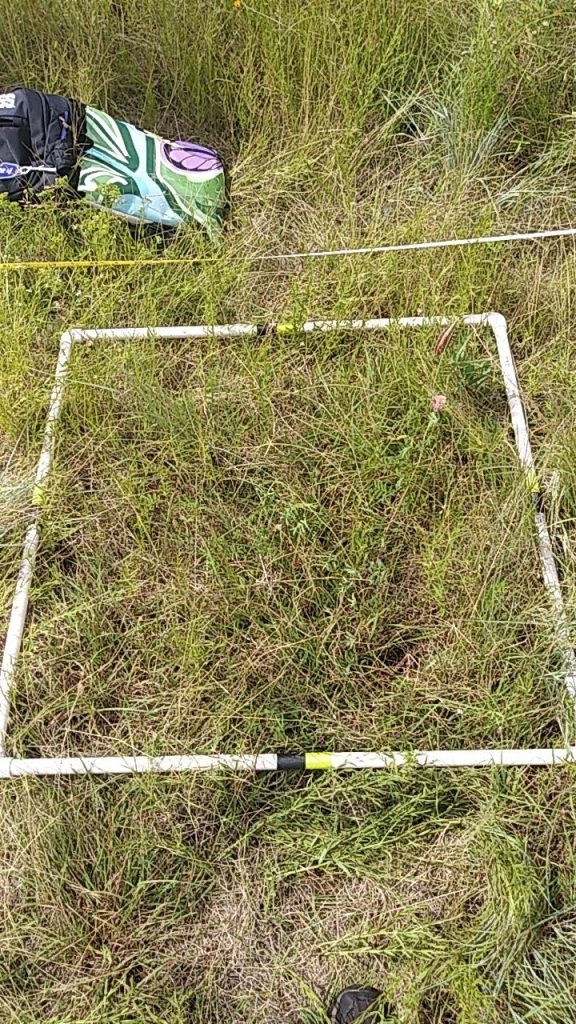
Part Five: The Old Bones
The final transect, the shortest and by far the most barren. Drifting pillars of light pierced the trees, making the dead Texas wintergrass glow and the spiderwebs apparent. Born of curiosity to see what would grow there, the transect was surveyed and to little surprise, the results showed few species growing. When collecting up the equipment and readying ourselves to leave, my partner and I happened upon a gruesome sight. Bones. Bones littered the leaves, dropped from the roost of the hawk we’d observed earlier. Even surrounded by metropolitan growth, in this little pocket of wilderness, we see the brutality of nature in force. As apparent as the beak gouges on the bones, the native Texas prairie has a rugged beauty all in its own, and I am proud to have helped been its steward for the short month I was in the field.
5 aspects of fieldwork which I learned while doing this project!
- Always drink water the night before and take allergy medicine.
- When collecting specimens, to take a good sample make sure every part of the plant is collected. Roots must be intact, and dirt knocked off.
- The earlier the better! The longer the day drags on the hotter the fieldwork will be. Especially in the Texas heat.
- If you see something unique, do not pick it! It could be the only occurrence in the area. Multiple picture angles and documentation of the GPS coordinates is the correct way.
- The Devil is in the details, It pays to be as thorough and specific as possible when identifying a plant! As the old saying goes, “Measure twice, cut once.”


